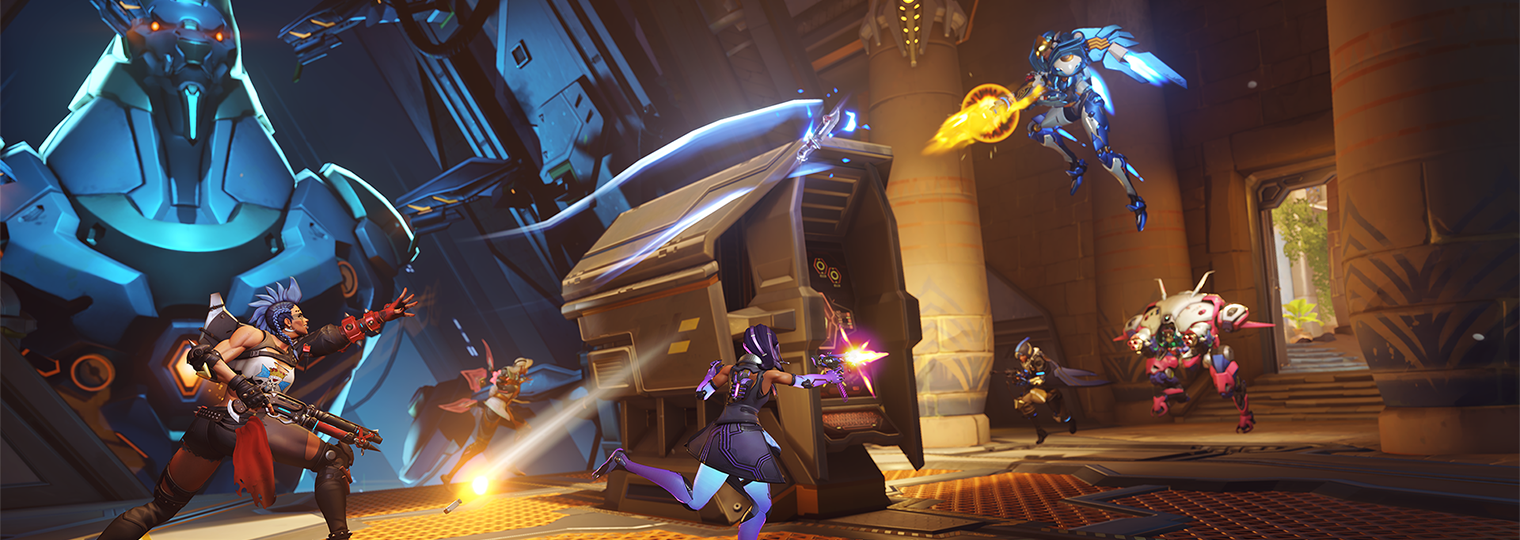
Hey all, Gavin Winter here from the systems team. You’ve probably learned at this point that if I’m talking, I’m explaining topics in more detail than anyone asked for and the tone will be at least slightly irreverent. You can expect more of that in today’s Director’s Take!
In Season 9 we talked about how we wanted to make each new Competitive Year a big event for the game, but we also mentioned that our mid-year patches would be bigger than others too.
Over the past several months our Versus, Player Experience, and Features teams have built several systems that are designed to improve our core gameplay experience for Season 12.
Updates to Avoid a Teammate
Let’s start with a feel-good feature everyone will be excited about, avoiding more players we don’t like!
We talked about this feature in a Developer Update earlier this year, but we’ve used that time to push this feature even further since then! The system now features 15 avoid slots, with two different types of slots making up those 15. You have 3 “Pinned” avoid slots that allow you to permanently avoid a player. Unlike our old avoid slots, these Pinned slots never time out. The other 12 “Recent” avoid slots time out after 7 days, like in our previous system. They also use a priority system that takes many factors into account when determining whether an avoided player can be placed in a match with you.
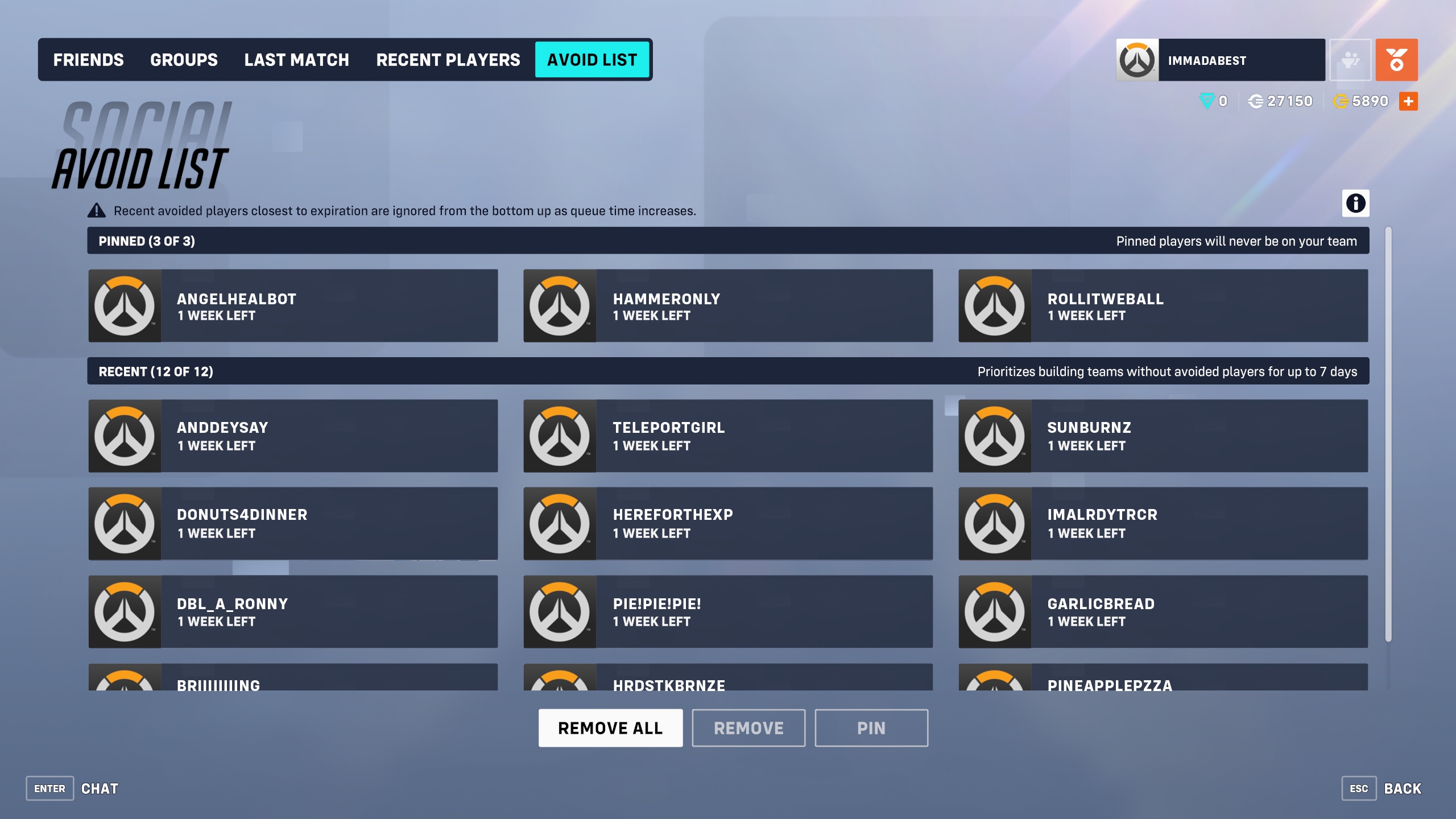
For most of our players, these Recent avoid slots function the same as our previous avoid slots—effectively always preventing these players from being placed in your match. It is important to note that it’s still possible to get players in Recent avoid slots in your matches though. This can happen when you’re at very high Rank or if you’re in lower-population regions during off hours.
As queue time increases, we’ll slowly begin ignoring players at the bottom of the Recent list. You can reset the duration of each player on the Recent list individually, sending them back to the top of Recent list.
The new system also automatically replaces the player with the shortest duration on your Recent list if the list is full, preventing you from having to micromanage the list.
Introducing Competitive Drives
A Drive is a new type of Competitive event we’ll run in for the first time this season! Our first Drive will start near the end of the season and will take place over a weekend. During that time, every match you play in Competitive Play Role Queue is a chance to earn new rewards.
When you win matches, you’ll earn Drive Score and progress toward the next Checkpoint. Each Checkpoint has a reward! Some are big payouts of Competitive Points, but the others are an all-new type of reward for Overwatch 2 that we call Signatures. They frame your BattleTag with a unique visual backing that will make your accomplishments stand out until our next Drive. Here’s are some examples:
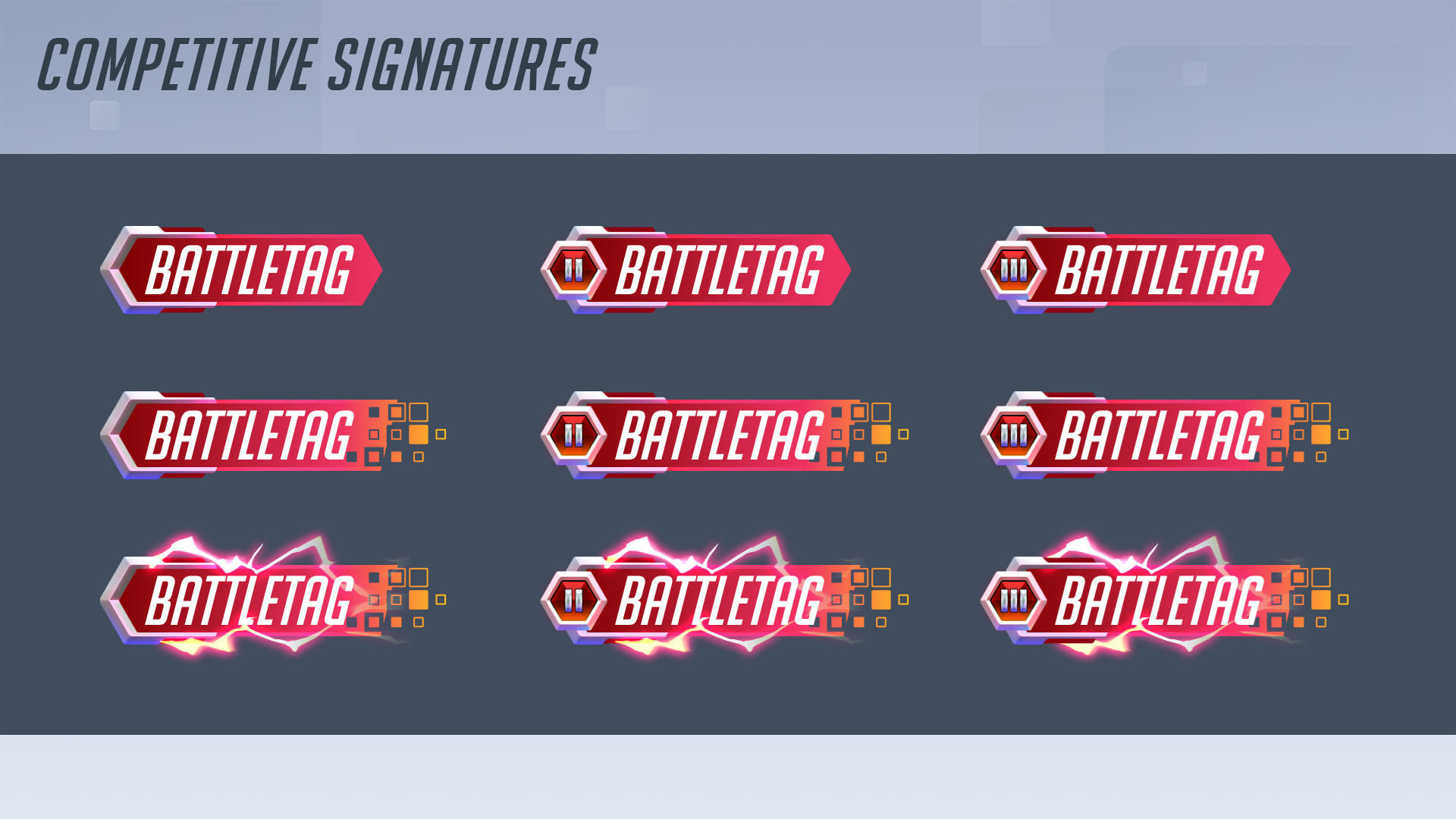
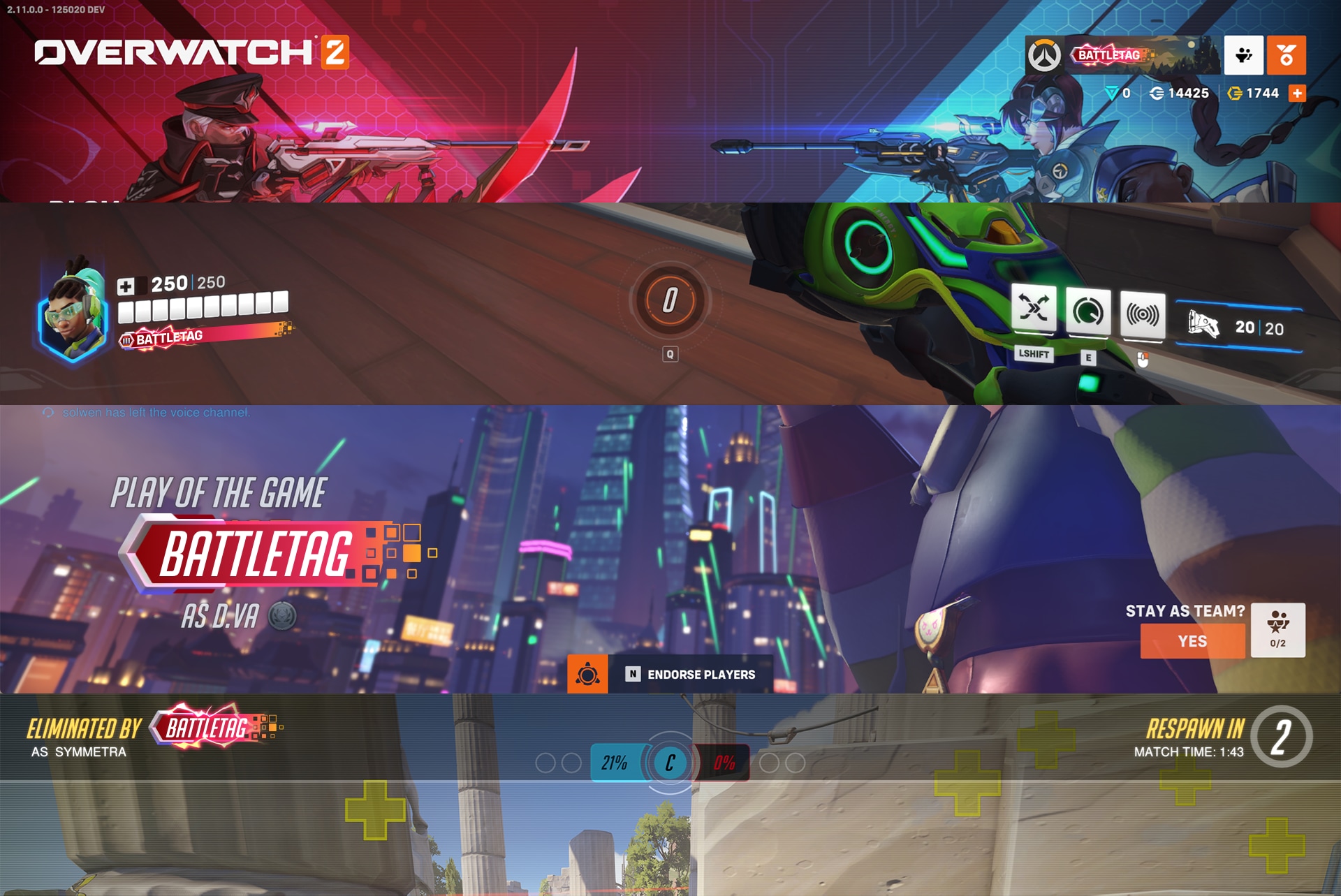
Resetting the Ranks
The start of Season 12 will also be a soft Rank Reset like the one we deployed in Season 9. That means we’ll be decaying everyone’s rank and moving all ranks closer to the average rank. We think that whenever we make bigger gameplay changes like the ones discussed in this blog, a whole new game mode like Clash, and hero balance changes it makes sense to enable Placements and give players a chance to push for a new career high. Rank Resets are also the only time we can redefine the thresholds of our Ranks, and while we are much happier with the Rank Distribution after Season 9, there was still some work we wanted to do.
We wanted Champion to be a very prestigious rank, but unfortunately Champion 1 was almost impossible to achieve. Champion, Grandmaster, and Master all had fewer players than we think they should, so we’ve remodeled our target rank distribution in our highest ranks. We also still had a few too many players in our lowest ranks, so that distribution has changed a bit too. Most of our highest and lowest ranked players will find themselves achieving new peaks after this reset, but the combination of techniques we're using in the reset gives everyone an opportunity to prove they're higher rank than they've ever been!
Introducing Wave Respawn
Next up, we’re removing the Group Respawn feature and replacing it with a feature we like a lot more! But first, we have some explaining to do...
You might remember from Season 7 that the goal of Group Respawn was to reduce the occurrences of one-sided matches. Thanks to the amazing efforts of our data analysts, we’ve learned a lot about one-sided matches since Season 7 and we have some good news to share.
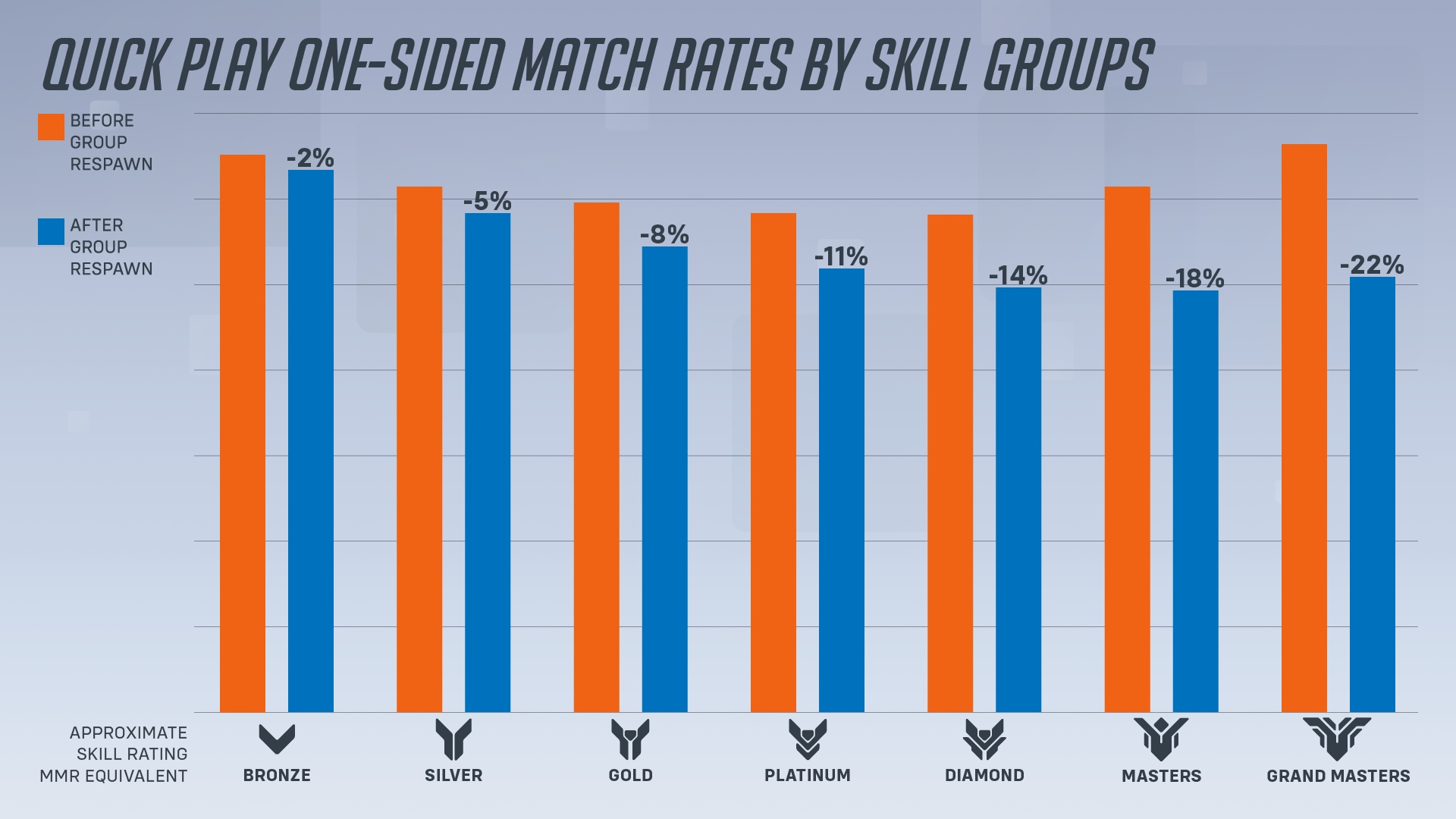
Group Respawn made a bigger difference in reducing one-sided matches than any change we’ve ever made! While Quick Play doesn’t have visible ranks, we still use MMR to try to make the best matches we can, and that lets us see which ranks benefitted the most from this system. We were really surprised to learn that Group Respawn had the biggest impact at Champion and Grandmaster and the lowest impact at Bronze. The system still made a significant difference at all ranks though!
Grouping up with your team reduces the chance of being on the losing side of a one-sided match considerably. We believe it reduces the chance so much that helping our highest skill players do it slightly more often had the highest impact. This system also made it much harder for that random on your team to throw your games by constantly attacking alone on repeat.
So those things were great, but the biggest problem with Group Respawn was how dying first often led to getting “buried” by a long sequence of teammates dying in a row, making your respawn time a lot longer. This meant their respawn times were generally shorter, but it also meant yours was longer. Wave Respawn fixes that by ensuring your respawn time will always be shorter than the default if another hero was already dead.
You might be familiar with Wave Respawn systems in other games, but here’s exactly what’s different about respawning in Season 12 for Quick and Competitive Play:
- Default respawn time increased from 10 to 12 seconds.
- Overtime respawn time increased from 13 to 14 seconds.
- Wave Respawn is disabled in Overtime.
- Overtime respawn time is not increased in Flashpoint.
- When the first hero on a team dies, they start a new Wave for their team.
- Any hero that dies within 6 seconds of a wave starting joins that Wave.
- A hero joining a Wave will respawn at the exact same time as the hero that started the Wave. This means that the respawn time of heroes joining the wave can be as long as 12 seconds if they died at the same time as the first hero or as short as 6 seconds if they just catch the end of the Wave.
- If a hero starts a Wave and no other hero has joined the Wave when their respawn time reaches 6 seconds remaining, we subtract 2 seconds from their respawn time. This means that they respawn in 10 seconds (our default respawn time before Season 12).
- Wave Respawn is also disabled when the Payload is near the end of the track in Escort and Hybrid (the same time our existing Anti-Stall system activates).
Even though the default respawn time has gone up, we expect respawn times to be lower on average in Season 12 because respawning alone is the same as before and many heroes will be respawning in less than 10 seconds with their teammates. We like how these changes have led to more team fights in our playtests, and we’re excited for fewer one-sided matches in Competitive Play. Most importantly though, we’ll be listening to your feedback and monitoring the results of these changes to determine how we might improve respawning further in the future.
Update for Flashpoint
Finally, we’ve noticed walking sims are a lot less popular these days, so we’ve added a speed boost to all spawn exits in Flashpoint! Think of these like the boost pads in your favorite party racing game. Passing through them will give you a significant short-term speed boost that will help you get back to the point faster, so you’ll be spending more time fighting and less time walking.
Dealing damage or taking damage will immediately remove this buff, so even if combat occurs near the spawn rooms, this speed buff won’t have much of an impact. This boost also won’t let you break the 75% increased movement speed cap, so if your hero has a speed boost effect, the sweatiest way to use it is to wait for the spawn door boost to wear off slightly first.
If you stuck around through all my absurdity, thanks for reading, and thanks for playing Overwatch 2. Let’s make a great game!